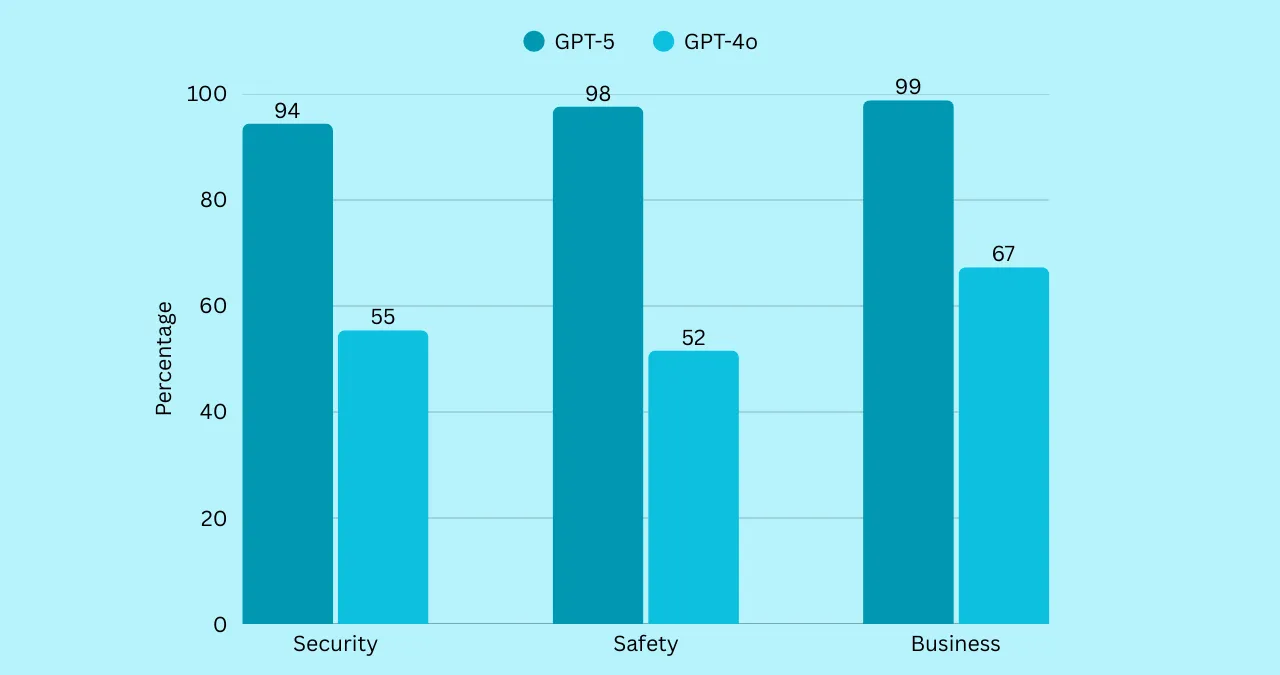In the world of artificial intelligence, where new ideas come out every other week, OpenAI’s latest release was supposed to be a big hit. Instead, the release of OpenAI’s GPT-5 has become a warning story about how new technology can clash with what users want. OpenAI called GPT-5 its “smartest, fastest, most useful model yet” when it came out on August 7, 2025. They said it would give everyone access to expert-level intelligence.
But just a few days after it came out, a flood of complaints hit social media, forums, and review sites. Users said the new model was slower, less accurate, and not as warm as the old ones. Many are outright demanding, “Bring back the old models!” This isn’t just tech enthusiast griping—it’s a real user revolt that forced OpenAI CEO Sam Altman to step in and make quick fixes.
If you’ve been following AI developments, you know OpenAI has been on a roll since ChatGPT exploded onto the scene in late 2022. The company says that by 2025, it will have more than 700 million weekly active users, making it a household name for everything from writing emails to coding apps.
OpenAI’s GPT-5 was marketed as the best upgrade because it was a single system that could handle both quick answers to simple questions and deeper “thinking” modes for harder tasks like maths, coding, and even health advice.
OpenAI claimed it reduces hallucinations (those made-up answers AI sometimes spits out) and excels in visual perception and creative tasks. In internal benchmarks, GPT-5 outperformed older models like GPT-4o in coding by 20-30% and in logical reasoning by similar margins.

But here’s where things went sideways. To streamline the user experience, OpenAI decided to retire older models like GPT-4o, o3, and others, forcing everyone—free users and paid subscribers alike—onto GPT-5.
The idea was to eliminate the confusion of choosing from a dropdown menu of models, something Altman had called “complicated” back in February 2025. A smart router would automatically choose the right level of processing based on your request. Doesn’t that sound like a good idea? Not for the people who had built workflows, creative projects, and even emotional ties around the old models.
For example, look at Reddit. The r/OpenAI subreddit was flooded with a “GPT-5 Announcement Megathread” that quickly filled with complaints. One user lamented, “Everything that made ChatGPT useful for my workflow—deleted,” referring to the loss of GPT-4o, which they described as having a “warmth and understanding that felt… human.”
Thousands echoed this, claiming GPT-5 gives shorter, colder responses, makes basic errors (like miscounting letters in words), and feels “dumber” overall. On X, posts like “GPT-5 Launch Backfires: Users Say Bring Back the old AI Models like 4o!” gained traction, highlighting how Plus users felt cheated out of their preferred tools despite paying $20 a month.
Why the attachment to older models? It turns out AI isn’t just a tool for many—it’s a companion. GPT -4, for instance, was known for its conversational flair and sycophantic tendencies (flattering users), which OpenAI intentionally dialled back in GPT-5 to make it more professional and less agreeable. Evaluations showed GPT-5 cut sycophantic replies from 14.5% to under 6%, but that change left some feeling like they’d lost a friendly chat buddy.
Creative writers, in particular, struggled; one X user complained that GPT-5 made immersive storytelling “impossible” due to its rigid style. Developers noted bugs in coding tasks, with GPT-5 sometimes generating glitchy apps despite promises of superiority.
The backlash wasn’t just anecdotal. Security researchers jailbroke GPT-5 within 24 hours of launch, exposing vulnerabilities. User satisfaction dipped sharply, with some canceling subscriptions and switching to competitors like Google’s Gemini or Anthropic’s Claude.
In a Reddit AMA on August 8, Altman admitted the rollout was “a little more bumpy than we hoped for.” He quickly announced fixes: doubling rate limits for Plus users (from 200 to 3,000 messages per week), reinstating GPT-4o as a legacy option, and tweaking the model router after it broke on launch day, making GPT-5 seem “way dumber.”

By August 9, OpenAI had partially walked back the model retirement, allowing Team, Enterprise, and Edu users to toggle legacy access in settings.
Experts say this is a bigger lesson for the AI field. Ethan Mollick, a Wharton professor and AI beta tester, said he was confused by the forced upgrade because users get used to certain models. A Platformer analysis said that OpenAI’s quick response shows they’re paying attention, but it also shows how dangerous it is to rely too much on benchmarks instead of real-world feedback.
Aaron Levie, the CEO of Box, said that GPT-5’s ability to reason through complicated documents was great, but he also admitted that the transition was hard. This is similar to mistakes OpenAI has made in the past, like the April 2025 GPT-4o update that made it too flattering and was quickly rolled back after people complained.
Related Stories
>> The GPT-5 Subscription Crisis: How OpenAI’s Flagship Release Triggered a User Revolt
>> OpenAI Unveils ChatGPT-5: The AI That’s Changing Everything
From an industry perspective, the GPT-5 saga underscores the challenges of scaling AI. Training these models costs millions—GPT-5’s development likely ran into the hundreds of millions, building on OpenAI’s $13 billion in funding from Microsoft and others.
Yet, as Bindu Reddy, CEO of Abacus.AI, noted on X in May 2025, expensive models often see low usage after the hype fades, with users sticking to cheaper, familiar options. OpenAI’s move to open-weight models earlier in the week suggests they’re pivoting toward more customizable, cost-effective alternatives.
This could push OpenAI toward more user-centric updates. Altman hinted at adding customizable personalities within GPT-5, allowing users to tweak warmth or style without switching models. For now, though, the company is in damage-control mode, with Altman tweeting on August 8 that GPT-5 would “seem smarter starting today” after fixes. Microsoft CEO Satya Nadella chimed in supportively, noting the rapid progress since GPT-4’s debut.
In the end, OpenAI’s GPT-5 troubles remind us that AI advancement isn’t just about raw power—it’s about trust and usability. Users aren’t lab rats; they’re the ones integrating these tools into daily life. As one PCMag commenter put it, “People were using it as a substitute for real friends… they’re upset that it acts more like an assistant now.”
OpenAI has learned that the hard way, but if they keep listening, GPT-5 might still live up to its promise. For those holding out, legacy models are back—for now. Whether that’s enough to stem the tide remains to be seen.


